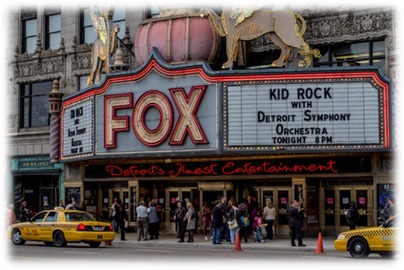 When I first went to work for WRIF back in the late ‘70s, the Post-Newsweek TV affiliate, WDIV, was in the process of launching a new branding campaign. Similar to today, Detroit was in the process of trying to overcome difficult economic times. Using the phrase “Go For It,” Channel 4’s message to Detroiters was to reach high, be strong, and not be afraid to take risks. It was the “Just Do It” of its time, and the campaign resonated with many Motor City residents and was very memorable.
When I first went to work for WRIF back in the late ‘70s, the Post-Newsweek TV affiliate, WDIV, was in the process of launching a new branding campaign. Similar to today, Detroit was in the process of trying to overcome difficult economic times. Using the phrase “Go For It,” Channel 4’s message to Detroiters was to reach high, be strong, and not be afraid to take risks. It was the “Just Do It” of its time, and the campaign resonated with many Motor City residents and was very memorable.
Fast-forward to 2014 and Detroit is once again in the process of trying to overcome even worse times, punctuated by a bankruptcy and an emergency financial manager. Newly elected mayor, Mike Duggan, faces challenging times, but is already instilling a “Go For It” attitude.
In a way, the Detroit Symphony Orchestra is a microcosm of Detroit’s problems. During tough economic events, cultural institutions are especially hard-pressed. You’ve no doubt read about the controversy surrounding the Detroit Institute of Arts, the city’s iconic art museum, facing the possibility of having to sell off some of its art assets in order to pay down the city’s gigantic debt.
And the DSO has been beset with problems of its own, punctuated by a devastating seven month strike in late 2010-11 that nearly shut the symphony orchestra down. And yet right after things got back to some degree of normal, the Detroit Symphony Orchestra pivoted.
It would have been understandable – and typical – for any media and cultural entity to pull back, save money, don’t rock the boat, and play it safe after the strike and during the ongoing financial crisis facing the city of Detroit. And after all, this is a symphony orchestra – not an Alternative radio station.
But instead, the DSO went for it, experimenting to find new ways to expand their cultural footprint, grow new audience, and reach out to consumers who might not even knew their existed.
In April 2011, they kicked off “Live From Orchestra Hall,” the first ever free webcast series by a symphony orchestra. During special weekends, the DSO’s concerts are streamed globally. And later that year, iOS and Android apps made it possible for more classical music lovers around the world to enjoy their work.
And not to be outdone, in 2012 they did their “MaxCast” – projecting a symphony performance on the side of the Max M. Fisher Music Center.
Recently, The New York Times referred to these DSO’s efforts as “cutting edge” and “ambitious” – apt descriptions for a symphony that just received six small new cameras that will be strategically placed around its performing area.
And the DSO has done the equivalent of reducing its “spot load” and “doing remotes.”
Translation: They’ve lowered their ticket prices and started booking concerts in different neighborhoods to become “the most accessible orchestra on the planet,” according to DSO president Anne Parsons in that Times piece.
The net-net? Donations and ticket sales are up, and the symphony will have a balanced budget for the first time in seven years.
Because of all this video streaming, the DSO’s musicians have to look their best. As Randall Hawes, a bass trombonist, told the Times, “We’re going to have to shine our shoes.”
 So if the DSO can “go for it,” it stands to reason that key radio stations and personality shows could – and should, too. By taking some chances, the Motor City’s orchestra now has created a niche, pushing it past more well-heeled prominent civic icons.
So if the DSO can “go for it,” it stands to reason that key radio stations and personality shows could – and should, too. By taking some chances, the Motor City’s orchestra now has created a niche, pushing it past more well-heeled prominent civic icons.
And the larger concept of reaching new audiences, expanding the listening area, and experimenting with new delivery systems is exciting. The DSO knows that not all of these “lab experiments” will work. But you get the sense they smell opportunity in a traditional music space where risk is a four-letter word.
I have long felt that the first traditional radio morning show that puts webcams in the studio and starts to stream every show every day could draw much needed attention to itself, its station – and radio. That puts some pressure on all the players involved to look their best Monday through Friday, but the industry has witnessed what happens when it plays it safe and is risk averse.
And then takes us back to the radio industry in general. While most companies mostly tightened down, cut back, and battened down the hatches during the deep recession of a few years ago, the DSO is a media beacon of hope that a “go for it” spirit in tough times just might be the smarter strategy.
- What To Do If Your Radio Station Goes Through A Midlife Crisis - April 25, 2025
- A 2020 Lesson?It Could All Be Gone In A Flash - April 24, 2025
- How AI Can Give Radio Personalities More…PERSONALITY - April 23, 2025




Read the article myself. Interesting analogy. I like the morning radio slant.
Thanks much, Al. Hope all is well.